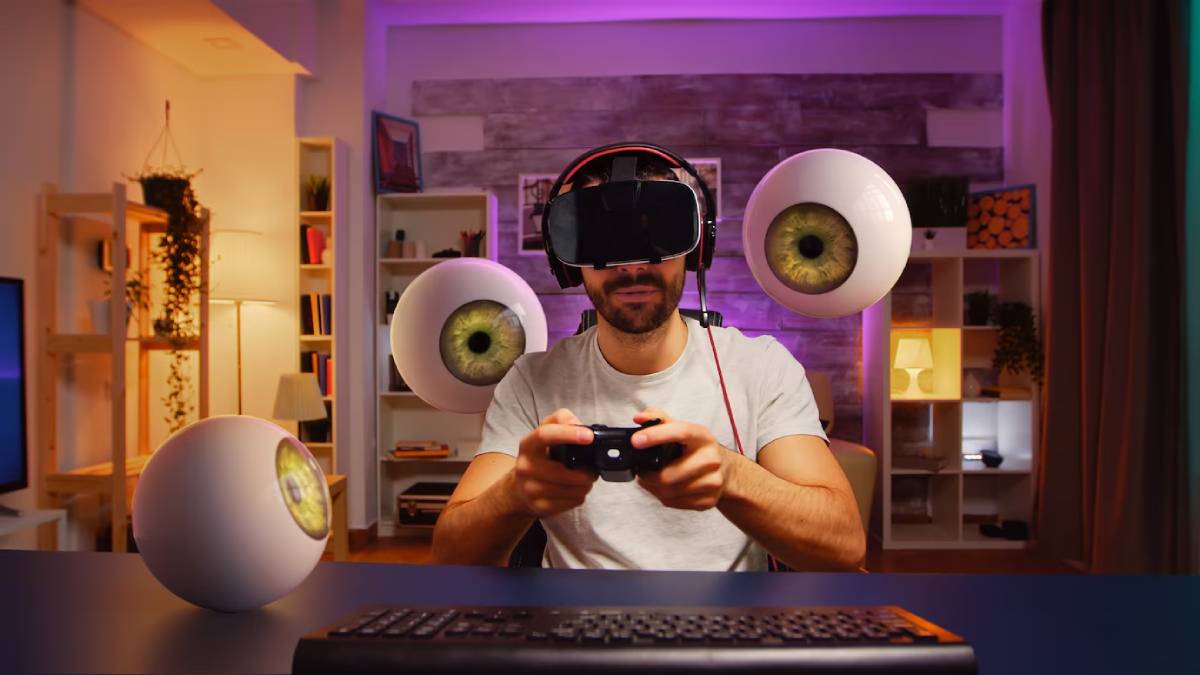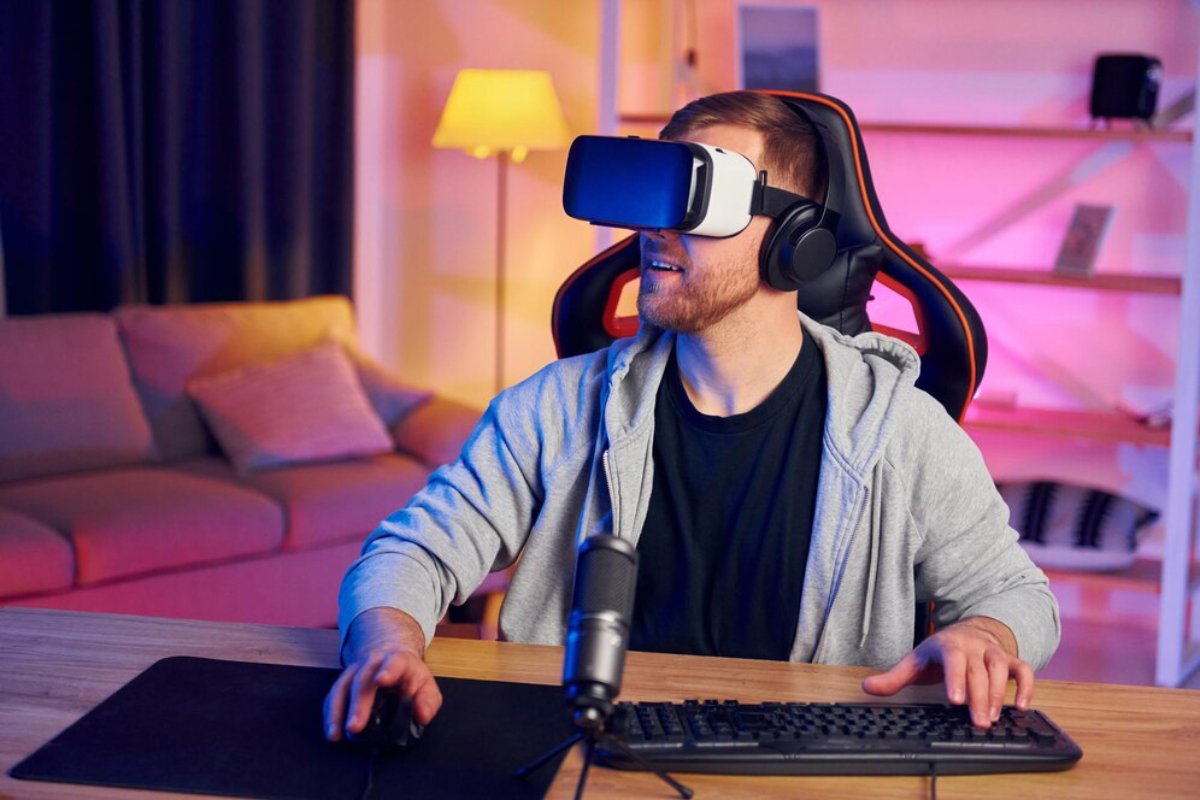
How to Stream VR Gameplay to Twitch and YouTube: An Expert Guide
Video games have been revolutionised by new media to an extent, and the latest game-changer is Virtual Reality (VR). It offers an experience that standard gaming can’t indeed provide. As VR expands, services like Twitch and YouTube are becoming leading locations for gamers to display their virtual quests. Streaming virtual reality (VR) gameplay is not just about telling your gaming story. It’s about creating a community, connecting with viewers, and even monetising your content. Also, as of October 2023, the demand for VR content creators has increased. So, this is a good time to try to energise broadcasting in virtual reality. This guide shows you the basics of streaming VR games. You’ll learn how to engage your audience effectively.
Understanding the Core
Streaming VR gameplay involves capturing your virtual reality experiences and broadcasting them live to platforms like Twitch and YouTube. Unlike traditional game streaming, VR streaming presents unique challenges and opportunities. The immersive nature of VR requires specialised equipment and software to ensure a seamless viewing experience for your audience. Moreover, VR content creation demands a keen understanding of both the technical aspects of streaming and the creative elements that keep viewers engaged.
Pro Tip: Engage with Your Audience: Interaction is key to building a community. Respond to chat messages and acknowledge new followers or subscribers.
Key Components of VR Streaming
- VR Headset and Controllers: Essential for experiencing and streaming VR games. Popular options include the Oculus Quest 2, HTC Vive, and Valve Index.
- High-Performance PC: It is necessary to handle the demanding graphics and processing power required for VR gaming and streaming.
- Streaming Software: Open Broadcaster Software (OBS) and Streamlabs OBS are popular choices for capturing and broadcasting your gameplay.
- Stable Internet Connection: A high-speed connection is crucial for maintaining stream quality and avoiding lag.
Quick Guide / Checklist
Before diving into the detailed steps, here’s a quick checklist to ensure you’re prepared for streaming VR gameplay:
- VR headset and controllers are set up and functioning.
- High-performance PC is ready and optimised.
- Streaming software is installed and configured.
- A stable internet connection is available.
- Twitch or YouTube account is set up for streaming.
- Audio and video settings are optimised for quality.
- Stream overlays and alerts are customised.
Important Tip: Monitor Your Stream: Keep an eye on stream health indicators to address any issues promptly.
Step-by-Step Guide (How to Practise)
1. Set Up Your VR Equipment
Ensure your VR headset and controllers are correctly set up and calibrated. Follow the manufacturer’s instructions to connect your headset to your PC. Test the equipment to confirm everything is functioning as expected.
2. Install and Configure Streaming Software
Download and install streaming software like OBS or Streamlabs OBS. Configure the software to capture your VR gameplay. This involves setting up a scene with your game capture, webcam (optional), and any overlays you wish to include.

3. Optimise Audio and Video Settings
Adjust your audio and video settings for optimal stream quality. Ensure your microphone is clear and free of background noise. Set your video resolution and frame rate to match the capabilities of your PC and internet connection.
4. Connect to Twitch or YouTube
Create or log into your Twitch or YouTube account. Navigate to the streaming settings and obtain your stream key. Input this key into your streaming software to link your account.
5. Customise Stream Overlays and Alerts
Design custom overlays and alerts to enhance your stream’s visual appeal. This can include subscriber alerts, donation notifications, and chat overlays. Tools like Streamlabs offer customisation options to make your stream unique.
6. Test Your Stream
Conduct a test stream to ensure everything is working smoothly. Check audio levels, video quality, and stream stability. Make any necessary adjustments before going live to your audience.
7. Go Live
Once you’re satisfied with your setup, hit the ‘Go Live’ button in your streaming software. Engage with your audience by responding to chat messages and providing commentary on your gameplay.
Avoid Common Mistakes:
Ensure your stream key is kept private to prevent unauthorised access. Regularly update your software to take advantage of the latest features and security patches.
Best Practices & Additional Insights
Enhance Viewer Experience
- Use a Green Screen: A green screen can create a more professional look by eliminating background distractions.
- Incorporate Multiple Camera Angles: Switching between different camera views can make your stream more dynamic.
- Schedule Regular Streams: Consistency helps build a loyal audience. Set a regular streaming schedule and stick to it.
Technical Considerations
- Optimise PC Performance: Close unnecessary applications to free up system resources for streaming.
- Utilise Ethernet Connection: For a more stable internet connection, use an Ethernet cable instead of relying on Wi-Fi.
- Adjust Bitrate Settings: Find a balance between stream quality and stability by adjusting your bitrate settings according to your internet speed.

FAQs
1. What VR headsets are best for streaming?
The Oculus Quest 2, HTC Vive, and Valve Index are popular choices for streaming VR gameplay due to their high-quality displays and robust tracking capabilities.
2. Do I need a powerful PC to stream VR games?
Yes, a high-performance PC is crucial for handling the demands of VR gaming and streaming simultaneously. Ensure your PC meets the recommended specifications for your VR headset.
3. How can I improve my stream’s audio quality?
Invest in a quality microphone and use noise-cancelling software to minimise background noise. Test your audio levels before going live to ensure clarity.
Your VR Streaming Journey Starts Now
Sharing your virtual adventure with the world streamed VR gameplay on Twitch and YouTube. With this guide, create engaging and professional streams that attract viewers! Engage your audience. Optimise your setup. Brush up on your streaming skills.
So, you’re now ready for your first step toward VR streaming. You’d already start maintaining your community and working on your passion, virtual reality games. Just set up your equipment and stream your life now.


